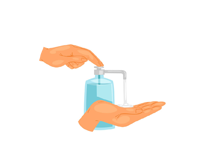Hypromellose
Introduction
Hypromellose is a commonly used eye lubricant that helps relieve dryness, irritation, and discomfort in the eyes. It works as an artificial tear by forming a protective layer on the eye surface, keeping it moist and preventing further irritation. Doctors often prescribe it for conditions such as dry eye syndrome, eye strain caused by screen usage, or environmental factors like dust, wind, and smoke. Hypromellose is widely available in the form of eye drops and is considered safe for regular use under medical supervision.
Medicine Not Available for Hypromellose
Uses of Hypromellose
- Treatment of dry eye syndrome
- Provides relief from eye irritation caused by environmental factors like smoke, wind, or dust
- Used to treat discomfort after eye surgeries or procedures
- Prevents eye dryness in patients using contact lenses
How Hypromellose Works
Hypromellose works by acting as a lubricant for the eyes, forming a thin protective layer that helps retain moisture on the surface of the eye. This relieves dryness, irritation, and discomfort by preventing excessive evaporation of the eye`s natural tears. It also helps in reducing friction between the eyelid and the eye, making blinking more comfortable.
Benefits of Hypromellose
- Effective in treating dry eye symptoms and irritation
- Provides quick and long-lasting relief from discomfort
- Safe for regular use, especially for contact lens wearers
- Helps maintain eye moisture and improve tear stability
How to Take Hypromellose
Hypromellose is typically available in the form of eye drops, gels, or ointments. The usual dosage is 1-2 drops in each affected eye, as needed, or as directed by your healthcare provider. If using a gel or ointment, follow the instructions on the package carefully. Always wash your hands before applying the product to avoid contamination.
Types of Dosage Available
- Hypromellose eye drops (0.3% solution)
- Hypromellose eye gel
- Hypromellose eye ointment
Side Effects of Hypromellose
Common side effects:
- Temporary blurred vision after application
- Eye discomfort, burning, or stinging
- Redness or irritation in the eyes
Severe side effects (rare):
- Allergic reactions (swelling, itching, or redness)
- Persistent eye discomfort or vision problems
- Signs of infection (discharge, pain, sensitivity to light)
Safety Advice
- Avoid touching the tip of the dropper to any surface to prevent contamination.
- If you wear contact lenses, remove them before applying Hypromellose and wait for at least 15 minutes before reinserting them.
- Consult your doctor before using Hypromellose if you are pregnant, breastfeeding, or have a history of eye infections.
- Discontinue use and consult your healthcare provider if any severe side effects occur.
Frequently Asked Questions (FAQs)
Q: What is Hypromellose used for?
A: Hypromellose is used to treat dry eyes and relieve eye irritation caused by various factors such as environmental conditions, surgery, or contact lens use.
Q: How should Hypromellose be applied?
A: Hypromellose is applied as eye drops, gel, or ointment, depending on the product. Follow the prescribed dosage and application instructions provided by your healthcare provider.
Q: Can Hypromellose cause blurred vision?
A: Yes, temporary blurred vision may occur immediately after applying Hypromellose. This usually resolves within a few seconds to minutes.
Q: Can I use Hypromellose with contact lenses?
A: Yes, Hypromellose is safe for contact lens users. However, contact lenses should be removed before using the product and reinserted after 15 minutes.
Q: Are there any side effects of using Hypromellose?
A: Common side effects include temporary blurring, eye irritation, or stinging. If these persist or worsen, consult your doctor.
Disclaimer : Zeelab Pharmacy provides health information for knowledge only. Do not self-medicate. Always consult a qualified doctor before starting, stopping, or changing any medicine or treatment.
Download India's most affordable pharmacy app
- Compare with medicine prices
- Save upto 90% on your medicine bills

Temperature Controlled storage and delivery

Regular Sanitization

Disinfected Packaging













 Added!
Added!